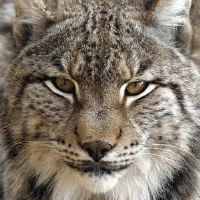
Old mine makes a comeback
First gold bar poured last week
8/30/2010
OATMAN - There's still gold in the hills around Oatman. Workers at the Gold Road Mine poured their first bar of the precious metal last week.
"It was pretty exciting stuff," said Addwest Mine Manager Charlie Bauer.
Everyone wanted to watch as the gold ore was heated, melted and then poured into a mold, he said. The result is a hardened bar of ore about the size and thickness of an average brick.
"Everyone wanted to touch it, hold it and have their picture taken with it," Bauer chuckled.
The gold in the bar is far from pure. There are still impurities, such as silver and other minerals in it, he said. It will be transported to a refinery in order to have the impurities removed.
The shiny, yellow metal has attracted people to the Southwest and to Oatman for centuries. According to information from Addwest, the Gold Road vein was located in the early 1900s about two miles from present day Oatman. It wasn't long before other gold veins were found in the area and the town of Gold Road sprouted nearby.
The mine has gone through the hands of a number of different owners, according to Addwest. Gold Road Mining and Exploration Company had the original claim and sold the mine to United States Smelting Refining and Mining Co. in 1911. The town of Gold Road turned into a "company town" and Oatman was established in 1912 to help supply Gold Road Mine and other mines in the area. USSR&M operated the mine until 1919 and then leased it. The company that leased it operated it until 1922 and intermittently until 1937. At that time, USSR&M bought a new mill, rehabilitated the mine and started developing underground gold reserves.

The entrance to the Gold Road Mine near Oatman.
Presidential Order L-208 closed the Gold Road Mine and all of the other non-essential metal mines in the area in 1942. The idea was to focus the country's mining resources and equipment on necessary metals for World War II. According to Addwest, the Gold Road mill was dismantled and moved to Bayard, N.M., to process zinc ore. At that point in its life, the mine had processed 612,000 ounces of gold.
Gold Road Mine was not restarted after the war because of the high cost of labor. Twenty years later, USSR&M went bankrupt . A number of survivor companies held the property, but none were able to reopen the mine.
Addwest bought the property and consolidated all of the claims covering the vein in 1993. The company bought a new processing plant, refurbished the mine and built a 6,200-foot-long decline tunnel into the mine to reach the gold reserves. Production at the mine was restarted in 1995.
Addwest closed the mine in 1998 after the cost of production outweighed the market price of gold. The company produced and sold nearly 88,000 ounces of gold from the mine between 1995 and 1998.
Tours of the mine became available in 1999, when Barry Britt came up with the idea as a way of teaching people more about mining and its dangers. Britt and his wife ran regular tours of the mine until May 2007, when Addwest leased the historic United Western Mine nearby and decided to reopen the Gold Road Mine to production. Addwest plans to change its name to Mojave Desert Minerals, LLC.
In order to reopen the mine, Addwest had to acquire the proper permits from the state and federal governments, Bauer said. It also purchased a multi-million-dollar filter press which extracts nearly all of the water from the mine tailings and minimizes the mine's need for a slurry pond. The company also refurbished some of the tunnels and dug new tunnels within the mine, he said.
The quartz vein that the microscopic particles of gold sit in averages between four and six feet across, Bauer said. In order to extract the gold ore, the rock has to be crushed and then soaked in a cyanide solution to leach out the gold. The gold is then collected, melted and poured into ore bars.
"It's a closed-loop system; all of the water and chemicals are recycled, none of it is discharged," Bauer said.
The company has a three-year permit to operate the mine, but may ask to extend the permit if the market for gold continues to be favorable.
The company may also hire additional staff. It currently employs 125 people, Bauer said. Most are from the surrounding area and had worked at the mine in the 1990s.
Many of them returned to work at the mine because of Addwest's focus on safety, Bauer said.
"We spend a lot of money to keep things from happening," Bauer said. The mine also has two mine rescue teams which can respond to an incident quickly. It's something that most small mines don't have, he said. The mine also has safety structures inside the mine to help prevent a collapse, employees go through random mandatory evacuation drills, and additional escape tunnels are drilled throughout the mine. All are designed to get miners out safely, he said.
